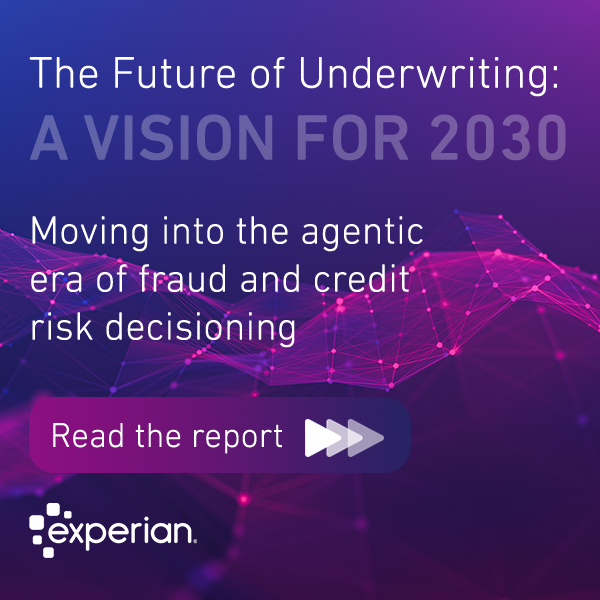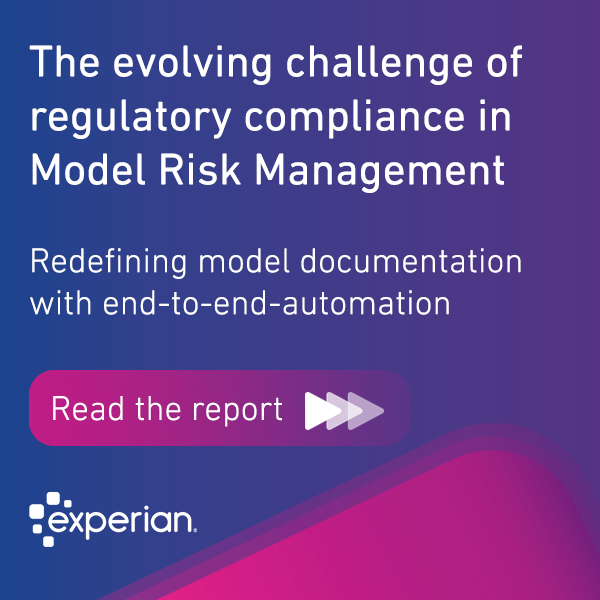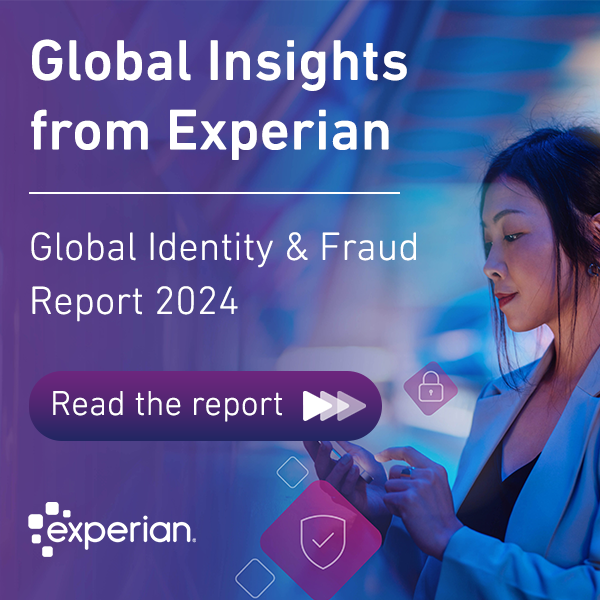Customer Experience
Engaging consumers in a more meaningful way is key to business success, we look at how to provide the right level of security, personalization and convenience in a complex digital landscape.

There's been lots of discussion about what a return to normal will look like as we transition out of the global pandemic—and much remains up the air. However, our recent consumer and business surveys paint a picture that merits the attention of financial service and credit companies. The big takeaway: The Covid-19 crisis has bifurcated consumers, created extremes on both sides. On the one hand, many individuals coming out of the pandemic have more cash than they had going in. The crisis didn't impact their income, and instead, they've spent the year spending less than they usually would due to work-from-home mandates and local lock-downs. Our consumer survey from January 2021 shows that financial challenges have eased for younger consumers and higher-income households. Yet, at the same time, there's also a contingent of consumers who continue to struggle. One in three of our survey respondents reported that they still have financial concerns and a similar percentage are worried about their employment. We anticipate that the demand for support, service, and credit will be high from each side. So how can companies respond to the heightened need for credit products while continuing to service consumers who may need support? This is where digital solutions make all the difference. By employing digital onboarding and decision automation tools, you can rapidly increase your capabilities while also improving the online customer experience for all. A return to spending The U.K. provides a glimpse of what a staggered return to normalcy may look like. When shops and restaurants re-opened for business in mid-April, lines of people streamed out the doors and flooded the streets. With the country's re-opening culminating in June, many consumers will be looking to resume spending on items and projects that they've neglected since the pandemic's start. For example, our survey data reveals that consumers are becoming less cautious with their finances in general. Fewer people report that they're cutting back on discretionary spending and there's a decline in consumers putting money toward emergency funds and drawing funds from savings accounts. These consumers may be gearing up to spend more. And companies that can anticipate their needs and meet them proactively will be positioned to win and keep their business. Solutions for pent-up demand Many businesses are already preparing for this new wave of demand. Consider that eight out of 10 businesses report that they're turning to cloud-based decisioning applications to improve the customer journey. In doing so, companies are giving themselves much-needed flexibility right when it's needed most. They can dial up their online capabilities based on demand and then dial down if it drops. At the same time, these automated solutions enable companies to deploy their staff to customers who do require personal attention. It's a divide-and-conquer model that keeps the customer at the center. In addition to utilizing the cloud, more than 40% of companies say they leverage AI to improve the customer experience. The AI component enables companies to provide personalized options for consumers and create customer journeys that are far more relevant. The timing for such personalization couldn't be better. In our research, a growing percentage of consumers indicate they're willing to share more personal data about themselves in exchange for improved experiences and added value. Building solutions that work—for everyone The pending volume creates a significant growth opportunity and highlights why digital solutions are a must. Companies that provide the best digital service to customers will garner their trust, loyalty, and even referrals. This yields more demand, increasing the need for scalable, cloud-based onboarding and decisioning even more. Amid this activity, you'll want to focus on getting the most from your digital tools. To do so, consider: Leveraging data for improved credit outcomes Evaluate your end-to-end customer journey, looking for ways to utilize data and increase personalization at every juncture. You'll improve the customer experience and provide more relevant offers. The right data also provides a holistic picture of customer credit risk and ensures you're not creating problems for the future. Utilizing low-code solutions so employees can dive in Digital onboarding and decision automation can be game-changing for the customer experience. But if it's hard for employees to use, then that effectiveness takes a hit. Look for solutions that your employees can use off the shelf. The ability to generate customizable reports and execute on ideas and strategies without involving IT at every turn is essential. Recognizing limitations and potential bias Evaluate your analytics models and look for areas of limitation or potential bias. You want to ensure that you're providing access to credit to all eligible customers and not inadvertently excluding specific demographics. Building capabilities that put you ahead of the market The pandemic provided many lessons—and the value of anticipating demand or potential problems was one of the most important. The crisis is waning, but the financial consequences will continue to reverberate, especially as various government aid programs come to an end. Focus on improving your analytics so that they can better describe what's happening now and predict pending changes in demand and shifts in your portfolio. By and large, consumers are moving forward after a challenging year. Prioritize your digital solutions to make sure you can meet their needs regardless of what the future holds. Stay in the know with our latest insights:

The pandemic has enabled something close to a digital revolution, but how can businesses keep up with shifting consumer behaviors while ensuring fraud prevention is top of mind? Our latest Global Identity and Fraud Report takes a look at key consumer trends online and how businesses are responding.

The surge in digital demand over the past year reinforced the deep connection between recognition, fraud prevention, and the online customer experience. As businesses transformed their operations to accommodate the rapidly growing volume of digital transactions, consumer expectations for easy, secure interactions increased at an even faster pace. And that meant less tolerance for the interruptions caused by security and risk controls. Our 5th Annual Global Identity and Fraud Report highlights these shifts and more, drawing on three waves of data collected throughout the pandemic. The business and consumer surveys took place in waves from June 2020 to January 2021 across 10 countries spanning North America, Latin America, Europe, and Asia-Pacific. The breadth of data reveals notable changes in consumer and business behavior and priorities as each navigated the crisis. One of the many heartening discoveries included the fact that 8 in 10 businesses said that they now have a customer recognition strategy in place, up 26% since the start of the pandemic. Many companies also developed digital strategies as they strove to improve their online experience and provide security and fraud prevention measures when customers needed it most. When it comes to fraud prevention, companies are continuing to invest in securing online experiences. This is an encouraging trend, especially given that we anticipate fraud attacks will increase significantly in the near term. Here are some key consumer trends from the 5th Annual Global Identity & Fraud Report: Consumer digital trends and behaviors As of January 2021, 43% of consumers plan to increase their banking and shopping transactions in the next 12 months 60% of consumers globally have used a universal mobile wallet, a +7%-pts increase since the pandemic began and highest (66%) among under 40s 55% of consumers say security is their top priority online. This has been the case for the past 5 years of our study, with privacy (23%) second. Consumer concerns for fraud 44% of consumers globally said they were most concerned about protecting credit cards and bank account details 1 in 4 consumers (only 23%) were concerned about protecting personal data e.g. date of birth, address, and SSN or equivalent 33% of consumers are worried about identity theft compared to 28% of consumers who were worried about it before the pandemic Consumer preferences are shifting towards invisible security 74% of consumers prefer the security of physical biometrics, which is most applicable to mobile devices and include facial recognition and fingerprints 72% of consumers prefer the security of PIN codes, requiring the use of two devices, each connected to the users’ account 66% of consumers prefer the security of behavioral biometrics, which is passively observed signals across browsers/ devices requiring no effort from the consumer Even as businesses prioritize the customer experience and support, our research found that they’re still sustaining pre-pandemic levels of investment in security and fraud management. Access the report here to get more consumer trends and find out what businesses are focusing their investments to improve their customer’s digital experience, including fraud prevention.

Experian is honored to be recognized as a winner of the Artificial Intelligence AI Excellence Award by Business Intelligence Group. Experian was recognized for its credit and collections decisioning solution, PowerCurve, which features intelligent agent-customer assist that processes complex, regulated, and subjective interactions with customers, revolutionizing how they digitally interact, on their terms, with lenders. This AI virtual assistant offers customers 24/7 access to support from their credit provider - on a financially sensitive transaction such as collections. We embedded over 30 years of collections knowledge and experience delivered to major clients across the globe into a credit risk decision management solution that delivers this domain expertise, data, analytics, decisioning, and workflow to clients of all sizes via cloud technology. Harnessing the power of AI has enabled lenders to easily connect with customers on their terms in a fair and transparent way, and to recover losses in an operationally efficient way but also improve customer satisfaction. When’s the last time you heard a customer share a positive story about collections? This digital self-service channel allows customers to engage with a lender on their terms and allows the lender to fulfill key objectives for quickly recovering losses, using the company’s strategic parameters for segmentation and treatment paths. The intelligent agent customer-assist feature within PowerCurve continuously learns which distinguishes it from the traditional decision-tree structure of a chatbot. It remembers interactions and learns from them, has short-term and long-term conversation goals, and recognizes small talk. It treats customers fairly and transparently. The result feels more empathetic and allows for an always-on and real-time consumer interaction. It can also offer a future-forward benefit to lenders, by allowing their employees to strategically focus on other areas of the business, potentially increasing the capacity for more credit products and services innovation. This Business Intelligence Group awards program sets out to recognize those organizations, products and people who bring Artificial Intelligence (AI) to life and apply it to solve real problems. Related stories: Going the last mile: Improving the End-to-End Digital Customer Journey Technology today: Focus on innovation drives award-winning, AI-powered consumer lending Podcast: Driving product vision with the customer front and center, a software architect’s view

As consumers shop, bank, and pay online during the global pandemic, steps are being taken to return to more business as usual. But, what should businesses expect around consumer digital preferences post-pandemic? Steven Wagner, Global Managing Director of Decision Analytics, recently spoke with Jill Malandrino of Nasdaq Trade Talks about recent survey findings and overall trends to watch out for. Here are highlights of that discussion: Research trends indicate a continued and persistent surge in online transactions and digital payment mechanisms The current environment has been a tipping point for consumer trust in online transactions A secure environment through continuous and passive authentication is key to meeting online consumer demand There is a direct correlation between consumer trust in their online environment and their willingness to provide data to secure a transaction Businesses need to invest in AI that provides a good consumer experience -- from chatbots to machine-learning models that impact consumer treatment in real-time Watch the full episode now: Related stories: New research available: 2021 Global Insights Report Parting ways with old forms of managing credit risk online Why the new era of customer experience includes passive authentication

As the demand for digital exploded over the past year, companies responded in kind. Those who were prepared rapidly scaled their digital capabilities to accommodate the sudden influx of customers. And those who were caught off guard? Many found themselves scrambling to meet the moment. For both parties, the result has been an accelerated digital transformation that's benefiting businesses and customers alike. The focus has been primarily on improving the front-facing customer experience. But as we look ahead, the dramatic shift toward digital has also opened up opportunities to enhance the security and authentication experience too. By weaving authentication into the customer micro journey—the subsets of tasks that comprise the customer journey—we can strengthen security and decrease fraud. And the data collected along the way creates wholly new opportunities for personalization that improve the experience that much more. A brittle solution The most common authentication approach requires customers to create usernames and passwords and provide personal information to verify their identities. Customers increasingly expect that companies will require them to provide this personal information to secure their accounts. In fact, in a recent Experian survey, 45% of customers said they'd be willing to share more personal data with companies. However, as long as passwords serve as the primary security tool, the approach remains vulnerable. First, it's unlikely that companies would (or should) continuously ask customers to provide passwords and verify their identity at various stages in the customer journey. This means that there's one big gate for fraudsters to scale and limited hurdles once they've gained access to an account. Certainly, passwords are unique to an individual, which is a positive. But they're also brittle, so they're easily broken or compromised. They don't flex with the user or the customer experience, nor do they offer security beyond a specific juncture. As we look to improve the customer experience continuously, we also need to provide end-to-end authentication. Doing so ensures you can recognize customers at every point of their journey, whether they're logging in or checking out. Securing the micro journey An end-to-end approach requires an understanding of customer micro journeys. It's not enough to provide a great digital experience, say via your account onboarding, but then have a completely different experience when a customer needs access to payment support. Considering micro journeys allows you to dive deeper into each component of the consumer lifecycle, and to understand the nuanced interactions that occur within each of those stages. Rather than just focusing on general approaches across Onboarding, Login Access, Transactions, etc., each one of these stages can be broken into smaller discrete steps (micro journeys), where opportunities exist to simultaneously delight the customer, and to create a much more nuanced risk management strategy. Then you can ensure that each task is seamless, easy, and personalized to the individual. Such a strategy can create deep and lasting customer loyalty. And identification remains a crucial part of every micro journey. No one likes to be at a party and have the host ask them their name repeatedly. The concept applies to security as well. Passive or invisible approaches to authentication eliminate this friction. For example, companies can continually authenticate the customer by employing physical or behavioral biometrics as they progress through the journey. The technology considers: How does the customer hold their device? What time are they usually active? How much pressure do they apply to the screen? Such data paints a much more nuanced picture of an individual—and one that's exceptionally hard to impersonate. And while privacy concerns arise, the type of data required to authenticate customers in this way is far less intrusive than asking for personal information. Customers are increasingly amenable as well. In our research, consumers cited physical biometrics, OTP, and behavioral biometrics as their preferred authentication methods. Passwords didn't even make the top 5. A holistic approach We're at a point in which forward-looking companies can rethink the complicated security dance they've been asking customers to do and move toward a more passive approach. It's an evolution that doesn't just improve the security experience; it also opens up massive opportunities for increased personalization. The data gathered across these micro journeys enables you to design experiences that truly meet customers' individual needs. That capability can become a significant differentiator and driver of growth. Getting there, however, requires a holistic view of your customer experience—one that includes security as a critical element. Our past three research waves show organizations are starting to deprioritize fraud prevention in favor of customer care and online offerings. This is a concerning trend: companies cannot forgo one for the other. Instead, organizations will need to consider both security and customer experience and creatively explore how to bring them together. It's a long-term strategy for customer retention and growth, one that requires a deep understanding of your audience as well as the solutions needed to enable passive authentication. For organizations, the journey toward passive authentication as part of the customer experience is more of a marathon than a sprint. But by focusing now on melding recognition and the customer experience together, organizations can ensure they're ready to deliver high-quality, less intrusive, and more secure experiences that customers are beginning to demand. Related stories: The evolution of digital identities What your customers say about opening new accounts online during Covid-19 and impacts on how you handle customer authentication 2021 Predictions: Consumer demand for digital will persist and the customer journey will be redefined

If the past year revealed the rising demand for everything digital—it also highlighted key aspects of the online customer journey that organizations have neglected. Until now, most companies have prioritized their digital investments around the revenue-generating aspects of the customer experience. Online account onboarding, e-commerce, and credit lending are prime examples. However, when consumers require different outcomes such as payment support, the interactions are often still handled by call centers. We saw the consequences of this play out during the pandemic. As stay-at-home orders left call centers closed or understaffed, customers who needed help found themselves spending hours on the phone—or worse, were left without guidance. This digital disconnect may be common, but hopefully not for long. Forward-looking companies are creating end-to-end digital customer experiences that benefit customers and the business. From improved customer LTV (Life Time Value) to cost savings, the results reveal that prioritizing customers at every turn pays. The future of digital experiences revealed The last year yielded many insights into how, why, and when customers engage with a business digitally. Faced with few options, customers turned to online resources in droves. And unlike years past, when younger generations have driven digital adoption, the crisis forced customers of all ages to engage with businesses online. Around the world, companies rose to the challenge. According to Experian research, nine out of 10 businesses currently have a strategy for serving their digital customers, with 47% implementing their strategies since Covid-19 began. The rapid shift to digital uncovered opportunities to reach new markets. For example, online grocer Instacart™ launched support services specifically for seniors interested in grocery delivery. However, the sudden spike in consumer demand for engaging with businesses online also revealed significant gaps in the digital customer journey. Consider that only one in four consumers report that they can get help when they need it from a customer representative while online. We saw this play out in real-time after a global bank reached out because it needed a digital solution for payment support. The company had traditionally routed customers to a call center for help. But during the crisis, it was overwhelmed by demand. While working with this bank on a self-serve solution that enabled customers to address their payment concerns online, the experience revealed something important about the future of digital experiences: Regardless of where they are in their journey, customers expect—and deserve—the same experience. True digital yields a true value Investing in a seamless digital customer journey is a long game, but it's one that can pay off exponentially. As we’ve seen, organizations have prioritized digital investment that brings in near-term revenue. These include mobile capabilities that increase customer conversions or personalized offerings that boost the average spend. And make no mistake, digital solutions that meet these needs are essential. But the customer who applies for a vacation loan may be the same one who later needs a payment holiday. Meeting these needs digitally, no matter what they are, engenders deep loyalty. Companies that support their customers during downtimes will gain customers for life and reap the benefits when those individuals are inevitably back on their feet again. The happy result is not only increased financial stability for customers but also improved advocacy scores and customer lifetime value. Additionally, an end-to-end digital customer experience can yield unexpected cost savings. For instance, an organization we recently worked with was spending an average of $35 per customer interaction. Their customers accessed customer service representatives via many independent channels, incurring costs each time they connected. We provided them with a multi-channel digital solution that reduced the cost to between $5 and $7 that allowed several interactions and provided consistent experience in the process. In the end, the company was able to deliver better service at a much lower cost point. From here to there The goal of building an end-to-end digital experience is a worthy one, and there are a few components of a forward-looking digital strategy that will help ensure success. First, companies need to create systems and cultures that allow them to respond to changing customer demands. No one predicted that a pandemic would rapidly accelerate our digital shift. But the companies improved their digital capabilities to meet the need came out ahead. Also, while customers experience the technology's front-end, orchestrating and supporting that journey across a range of consumer touchpoints driven by different events is equally as important. Implementing decisioning tools that leverage data across systems allows you to create advanced analytical models that predict customer behavior, potential problems, and more. Organizations can then make decisions in real-time to support customers and the business when they need help, be it a global pandemic or an environmental event. Lastly, taking advantage of emerging technologies can ensure your company keeps pace with the rapidly evolving expectations customers have for their digital experience. For example, AI-powered virtual assistants learn from every interaction and provide more personalized service than a standard chatbot that uses decision trees. These virtual assistants won't replace humans but leveraging them to augment customer experiences offers additional support to customers and creates continuity across the experience. The shift we've seen is about more than meeting the digital demand. At the core, it's about leveraging digital capabilities to see, understand and prioritize customers at all points of their journey. Then we can offer them proactive solutions that make their lives better and strengthen our businesses along the way. Related stories: New research available: Global Insights Report, February 2021 The role of the virtual assistant: Meet consumer demand for the digital experience Cloud-based decision management software is a must for re-imagining the customer journey

Since the Pandemic began consumers have been scammed more than ever before. From phishing emails, fake websites, and other scams intended to steal personal and financial information, to fake pharmaceutical goods or goods that never arrived, to account takeovers, multiple ways to defraud people have emerged or re-emerged at an alarming rate. It's an understatement to say that now more than ever customers need to be protected and it's the right time for businesses to improve some of their capabilities and offer their clients the secure experience that they expect. The results from our recent global research study of changing behaviors and priorities throughout the pandemic show us just how important online security has become for consumers: Half of the consumers surveyed say they are very/somewhat concerned about conducting activities online; with the concern being most significant in India (69%) 4-in-10 consumers express increased levels of concern about online activities since C-19. The level of concern about consumer online activities and transactions has increased significantly since C-19 in India (61%), Brazil (57%), Singapore (53%), and US (44%) – one-fifth of consumers in the US and Brazil say that their level of concern has increased significantly. 42% feel that they are more of a target for online fraud now than before COVID-19, while only 25% feel safer about sharing personal information now than they did before COVID19 The largest sources of concern among consumers are credit card information being stolen (36%), online privacy (34%), identity theft (33%), and phishing email (32%). Consumers in India, Singapore, the US, and Brazil show generally more concern. Consumers have become increasingly positive towards more security measures One positive tendency that's been observed due to the increased security concerns is that consumers have become more comfortable with security measures being added online in order to protect them better: 55% percent of consumers expect more security steps when they are online and 49% want to have more visible security measures in place while on websites 47% of all consumers are expecting business to place strong security measures that they cannot see with another 40% expecting integration of features that recognize them during online purchasing without requiring them to share their personal data In fact, US consumers have increasing expectations on strong invisible securities (increased from 50% to 59% from June 2020 to January 2021) as well as identity authentication without sharing personal data (increased from 33% to 40% from June 2020 to January 2021) Consumers are accepting of biometrics and businesses should consider using it It is not a surprise that fraud prevention methodologies such as physical biometrics (which is visible) and behavioral biometrics (which is invisible) have become more popular with the public. Both can be added as an extra layer in order to improve the authentication process by increasing its trustworthiness and efficacy. What’s also vital is that none of the two is compromising the user experience too much when compared with other more traditional authentication methodologies such as passwords or knowledge-based authentication: 74% of consumers are feeling very secure while using physical biometrics with another 16% feeling somewhat secure 66% of consumers are feeling very secure when being protected by behavioral biometrics with another 24% feeling somewhat secure So, as over half of businesses (55%) expect to increase their fraud management budgets in the next 6 months, it's recommended that they take notice of these trends and act now. What's even more important is that companies that invest in advanced customer authentication methods benefit from improved customer opinion, which feels like a win-win scenario for both parties involved: When physical biometrics are used, 57% of global consumers indicate that this enhances (somewhat/very much) their opinion of the organization When behavioral biometrics are used, 53% of global consumers say that they have a better opinion (somewhat/very much) about the organization implementing them Related stories: Global Insights Report Wave 3 (February 2021) Global Insights Report Wave 1 (June/July 2020) What your customers say about opening new accounts online during Covid-19

The world is still grappling with the mental, emotional, and financial toll of the Covid-19 pandemic but there are clear signs of hope and resolution ahead. Consumer concerns about their personal finances have started to ease for the first time since June 2020. And there’s a groundswell of opportunity for businesses to serve the growing ranks of “connected customers”—putting the consumer truly at the heart of the relationship. Download Global Insights Report – January/February 2021 issue Key insights: 60% of consumers are using a universal mobile wallet - for online and/or in-person contactless transactions Top 2 activities among consumers online are personal banking (58%) and ordering groceries and takeout food (56%) 90% of businesses have a strategy in place related to the digital customer journey; 47% of businesses put this strategy into place since Covid-19 41% of businesses intend to use AI to acquire and onboard new customers 55% of consumers say security is the most important factor in their digital experience – this is highest in the UK (65%), followed by Japan (64%) Fraud is the biggest challenge among businesses; 55% of businesses plan to increase fraud management budgets In this report, we continue our examination of consumer behavior and business strategy throughout the pandemic. For our third wave of insights, we surveyed 3,000 consumers and 900 businesses in January 2021. Our respondents span 10 countries, including Australia, Brazil, France, Germany, India, Japan, Singapore, Spain, the United Kingdom, and the United States. Over the past 12 months, we’ve observed consumer demand for the digital channel increase at a rate that few could have predicted. The most recent survey shows that these trends are persisting. Looking ahead, we expect that as people get more comfortable with the security and convenience of the digital channel, it will become the preferred—if not permanent—way to bank and shop. Part of what’s driving the continued demand: Positive digital experiences. Most consumers report they’ve been satisfied with their online transactions, especially when they secure and their financial information is protected. This is remarkable, given the challenges businesses faced to meet online demand while simultaneously adapting their employee and customer operations to the crisis. Businesses rose to the occasion and there’s opportunity ahead. Our latest report reveals that consumer expectations for digital experiences continue to rise. For example, even as consumers enjoy the ease of online banking and shopping, security is top-of-mind. In response, businesses are renewing their focus on preventing and mitigating account takeover fraud, transactional fraud, and digital takeaway fraud (e.g. buy online and pick up in-store). And they’re looking for solutions they can use throughout the digital customer journey, not just account opening. Consumers are also looking for greater customer support across digital channels. For example, when a customer is engaging with a business digitally, access to customer service is essential. It’s also an area where many businesses are falling short. However, businesses have made redefining the customer journey a priority and they're investing in capabilities, such as artificial intelligence and automation, to deliver on customer expectations. Consumers and businesses have embraced the digital channel— and the promise it offers is only growing. Now as we move toward a new, post-pandemic era, organizations that re-imagine the customer journey and create digital experiences that place customers at the center stand to win. find out what businesses are using to help improve the customer journey across digital channels, as they prepare for post-Covid customer engagements.

Don't miss out on the top January headlines, including the latest coverage from our global experts, including the digital identity landscape, impacts of pandemic fatigue, protecting users and their experience, Covid-19 impacts on businesses in India, and consumers' digital experience expectations. Experian selected as leading provider of digital identity This MarTech Series article looks at Juniper Research's Digital Identity: Technology Evolution, Regulatory Landscape & Forecasts 2020-2025 report. David Britton, Vice President of Industry Solutions, offers his perspective on providing both convenience and security. In 2021, loyalty shouldn't be assumed Destination CRM covers findings of the recent Experian Global Insights report, which indicates that consumers might not be as patient with businesses for much longer. The impact of "pandemic fatigue" translates to an end in consumer acceptance of the pandemic as an excuse for poor service. Establishing and protecting user identity in a digital world Eric Haller, Executive Vice President & General Manager, Identity, Fraud & DataLabs, speaks to the rise of digital and the impact on the need to be able to identify an individual. Relying on technology to help deliver a good user experience is key to avoiding too much friction in the process. 99 percent of businesses in India implement digital online strategy to recognise customers; highest in APAC: Experian Report#TradeTalks: Increasing consumer demands and expectations Business Standard looks at recent global research findings on consumer and business economic outlooks, financial well-being, online behavior, and more. Most prominently, the vast majority of Indian businesses implementing strategies to recognize customers across platforms. The top three reasons people abandon online transactions In this Global FinTech Series article, Chris Fletcher, SVP Decision Management & Cloud Services, explores the current environment of online transaction explosion and what it means for businesses to accommodate this lasting preference for digital. It will be key for each transaction to align the need for security with the right level of friction to the consumer. Stay in the know with our latest insights:

With the turn of a new year, there’s positive news that a vaccine is making its way to local communities. As businesses set their goals and strategic agendas, a top question comes to mind: what consumer trends are here to stay post-pandemic. While it’s difficult to predict the future, we believe many of the digital behaviors and expectations observed in the past year will persist, calling upon businesses to do more with their data, analytics, and technology to bridge online and offline customer experiences. Top 3 predictions: Customer demand for digital will increase beyond its need-based role, as more people discover the safety and convenience online interactions provide, even as in-person activities are restored Businesses will shift from supporting the digital channel to re-designing the customer journey that seamlessly bridges traditional to digital customer engagement Trust for engaging with businesses online will continue to grow as consumers experience the value of their information used for less intrusive security and more contextual products and services Consumer expectations for digital will continue to grow Throughout the past year, it’s likely you’ve heard or read that the consumer demand for digital is increasing. It’s important to know there’s been an upward trajectory toward digital for many years but the sudden impact of the pandemic accelerated the consumer appetite for digital engagements. A key finding in Experian's global research is the pandemic has driven 20% more consumers to use online and mobile channels from April to September 2020, globally. In specific areas that have traditionally been in-person, such as grocery shopping, we’re seeing upwards of a 60% increase in consumers engaging in these activities online. This points to a category of essential activities that have propelled people into digital that maybe otherwise would not have - for example, those over the age of 65. There's no question the security and convenience of the digital channel will mean some of those consumers will continue to shop and bank online, despite the loosening of lock-downs and in-person behaviors resume. Businesses will focus on redefining the customer journey In the early months of the pandemic, many companies adjusted their operations at break-neck speeds to meet their customers’ needs and demands. Some businesses put temporary measures in place and others, with greater capacity for technology innovation, moved up their timelines for implementing strategic digital transformation initiatives. Consumers may or may not know the behind the scenes for how businesses are changing their operations, but their impatience before and during the pandemic is unwavering. In fact, 1 in 3 consumers will wait no more than 30 seconds before dropping out of a transaction if there’s some delay in progressing or completing it. The pressure on businesses to deliver a secure, convenient experience isn’t new but there’s another factor that must be considered. As people return to doing more things in-person, there’s an equally stronger need to bridge customer engagement across both traditional and digital channels in a seamless way. Almost a quarter of businesses we surveyed are already starting to make active investments in re-defining that customer journey. Consumer trust will continue to increase as more businesses use data for value-add Covid-19 led to a substantial change in people’s behaviors over a short period of time and many consumers have found themselves more trusting of online engagements than in-person ones. Physical safety, of course, being the greatest concern. While we expect to see people loosening up on self-distancing restrictions and doing more in-person, there’s been a tipping point reached in terms of online engagement, and the consumer trends for digital will persist. In the past year, we’ve even seen indicators that people have a better understanding of how their information is used by businesses. This is especially true when it comes to protecting their identity and preventing fraud. In fact, what our research demonstrates is that consumers are willing to give more information if there’s a perceived advantage – such as tighter yet frictionless security. With this increase trust in businesses, there’s an opportunity for companies to use that information to better connect with their customers and deliver a customer experience that’s unique. Related stories: Explore our global research Best 2020 stories: Trends and insights Nasdaq #TradeTalks: Increasing consumer demands and expectations

The rise of digital decisioning software enables organizations to scale a similar level of personalization, offering customers what they need at the exact right time. And organizations that do it well dramatically improve the customer experience and drive loyalty and revenue in the process. But realizing this promise takes the right tools. The most effective decisioning platforms include a powerful combination of data, analytics, and technology. Equally important, the software must allow non-technical users to update and change strategies to better meet customer and organization needs without burdening IT. Good versus great From a credit risk perspective, there's a vast difference between good decisions and really great decisions. For many organizations, the current status quo still involves decisions made in silos, with business groups sitting in different locations (now even more so, given the prevalence of work-from-home). Creating usable predictive models and then putting them to use can take weeks or even months. What's more, changing the model often requires that business users make requests of perpetually overloaded IT teams. To be sure, the process eventually yields decisions. However, from the customer's POV, they may be slightly irrelevant or feel less than personal. On the business side, the model may lack essential data from across the organization or not yet include critical factors in a rapidly changing landscape. A great decision, on the other hand, benefits the customer and organization alike. Robust analytics enable the decisioning process to reflect the most relevant customer data, from websites they've recently browsed to purchases they've made. The decisions, as a result, reflect that thoughtfulness. They're immediately useful and relevant to customers, putting forth guidance and products when customers need it most. Exponential organizational value Improved customer experience is a key objective for many organizations. Digital decisioning can help further that goal while also providing returns in multiple other ways. For instance, an advanced digital decisioning platform enables organizations to pivot quickly in the face of crisis. Organizations can add new data sources and explore new models in rapid fashion, tailoring them to immediate demands. In doing so, they not only improve predictive power, but they also produce better decisions. The process allows companies to discover and launch new products, reach new markets, and surface early signs of trouble within customer segments. This past year, we witnessed first-hand how organizations leveraged digital decisioning to deftly navigate a challenging environment. For instance, one of our customers, a large bank, used the software to run simulations of new strategies it was considering in response to the pandemic. In doing so, the bank gleaned a better understanding of how the plan would impact its portfolio. The company was also able to identify areas of overlapping services and take proactive measures to eliminate duplication and reduce expenses at a critical time. The cumulative result of improved digital decisioning is an increased ability for companies to differentiate themselves from the crowd. This is true across industries and verticals, from innovating consumer financing for automotive companies to helping healthcare organizations better manage patient debt. That secret sauce Like the friend that really gets you, a great decisioning platform is invaluable. But what makes a platform rise to the top? As noted above, the ability to incorporate and integrate lots of high-quality data is essential. Timely customer data helps identify customer trends and fuels more accurate predictions of future behavior. Platforms should also take regulatory obligations, business constraints, and changing risk factors into account. Solutions that leverage advanced analytics can then transform an ever-growing body of data into decision insights. The software should capture the data used in making those thousands or millions of decisions and make it available real-time to business users, creating a continuous feedback loop. The latter ensures that businesses can stay relevant and nimble. Notably, leading digital decisioning platforms also prioritize the business user along with IT expertise. At a moment that demands quick responses and near real-time solutions to customer needs, business users also need the ability to design, build, test, and deploy strategies. The democratization of the software ensures that the organizations can experience a digital decisioning platform's full potential. In this new era, the organizations that deliver value across the customer journey will be the ones that thrive. Digital decisioning empowers organizations to manage costs and risk while keeping the focus on the customer. They can do this even as they grow, building healthier, more responsive companies with customers at the core of every decision. Related stories: Cloud-based decision management is a must for re-imagining the customer journey Impact of technology on changing business operations Digitally managing your at-risk customers most impacted by Covid-19




